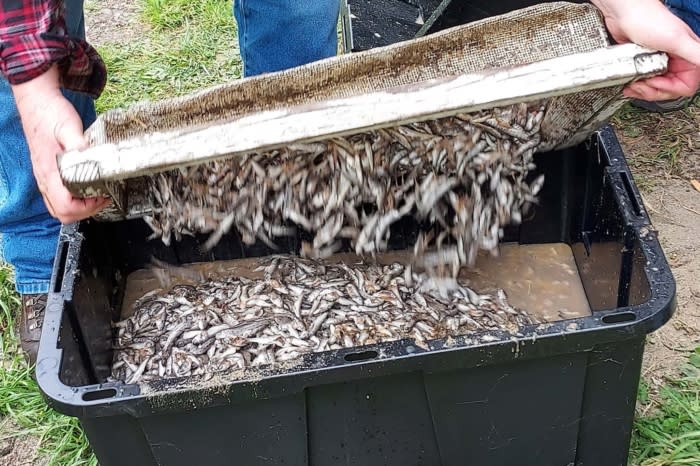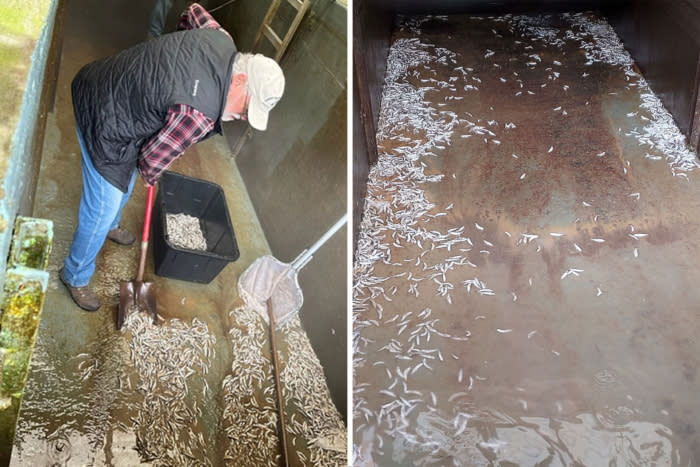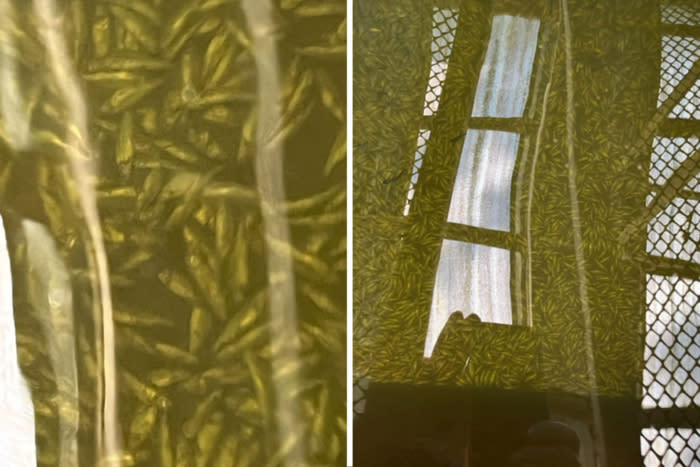‘What Would Possess Someone?’: 20-Year-Old Charged With Killing 18K Salmon by Pouring Bleach in Oregon Hatchery

When volunteers of an Oregon salmon hatchery showed up to work on the morning of April 22, they discovered an act of vandalism they’re still struggling to comprehend.
Someone had broken in at night and poured a gallon of liquid bleach into one of the hatchery’s four tanks for raising Chinook salmon. The result? Nearly 18,000 young fish dead, just weeks before a plan to release them into the Umpqua River in June.
“What would possess someone to do something like this?” said Deborah Yates, president of the Gardiner, Reedsport, and Winchester Bay (GRWB) Salmon Trout Enhancement Program (STEP) in Reedsport. “It was just so hard. You get so attached to these fish. It’s devastating. It still brings tears to my eyes.”
Just a few days later, the Douglas County Sheriff’s Office arrested 20-year-old Joshua Heckathorn for the crime. He could face prison time for 17,980 charges of Unlawful Taking Chinook Salmon, which raises the crime to a felony.
“The killing of these fish is a real blow to the STEP Program Volunteers, ODFW [Oregon Department of Fish & Wildlife], fishermen, and the community as a whole,” Oregon State Police Sergeant Levi Harris said in a news release. “In my 25 years as a game warden, this is one of the most senseless acts I have seen.”
Motives Remain Unclear
It didn’t take long for investigators to identify Heckathorn as a suspect. A Douglas County Sheriff’s Office deputy saw Heckathorn walking south along nearby Highway 101 just 2 days after the incident, according to a news release. The deputy encountered him again that evening behind a locked gate in the hatchery facility.
Heckathorn, a Gardiner resident, admitted to breaking into the hatchery, entering the storage location, and handling the chemical bottle, police said in the release. But it’s not clear if investigators have uncovered Heckathorn’s motives for poisoning thousands of fish.
The 20-year-old also faces charges of Criminal Trespass, Burglary II, Making a Toxic Substance Available to Wildlife, and Criminal Mischief 1st Degree. Additional penalties may include a lifetime angling license suspension and lawsuits for unlawful killing of wildlife.
In general, the maximum civil penalty in Oregon for the illegal taking a single Chinook salmon is $750. But in this case, courts have the authority to multiply the amount by the number of fish taken. That could result in a potential judgment against Heckathorn of over $13.4 million.
“The Douglas County Sheriff’s Office has been a great partner for the Oregon State Police and Fish and Wildlife Division,” Harris said. “Their enthusiasm and professionalism is very much appreciated.”
A Mission to Save Salmon
Volunteers at the STEP Program have worked for decades to fulfill its mandate of protecting Oregon’s fisheries.
Oregon legislators created the program in 1981, offering a way for locals to contribute to environmental stewardship by volunteering at hatcheries around the state. The hatchery in Gardiner, Reedsport, and Winchester Bay (GRWB) first opened in 1992. Since then, thousands of volunteers have helped with stream habitat restoration, educating the public, as well as hatching and rearing salmon and trout.
The fish lost at GRWB last month would have joined about 60,000 other young Chinook that will be fin-clipped and released in June. Now the hatchery’s volunteers must cope with the loss of the fish and their work raising them, said Yates, the hatchery’s president.
In 3 to 4 years, many of those young fish would have returned from the ocean as adults. That would mean about 200-400 fully grown salmon available for harvest for Winchester Bay and Umpqua River anglers, providing much needed revenue for local economies, according to hatchery managers.
The loss is difficult because Chinook salmon populations have long been declining. Current populations are just 10% of historic numbers, according to the Environmental Protection Agency. Even worse, this year’s batch of young fish were some of the healthiest the hatchery had ever seen, Yates said.
“We were so happy because we were having such a great year. The chances of these babies coming back was so good because they were so healthy,” she said. “The population of Chinook overall is declining and we don’t know why. To have a bumper crop so that we could really have a positive influence on the fall Chinook population — it was harder to take.”
The post ‘What Would Possess Someone?’: 20-Year-Old Charged With Killing 18K Salmon by Pouring Bleach in Oregon Hatchery appeared first on GearJunkie.



